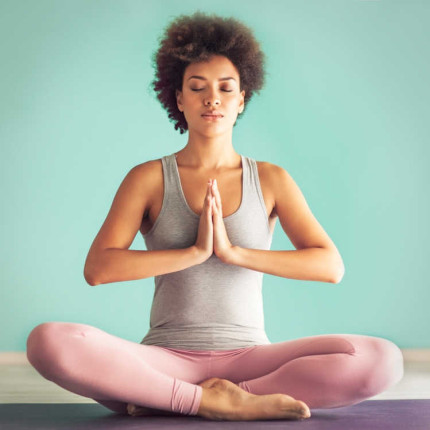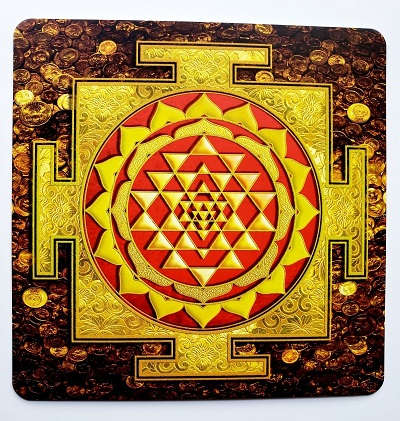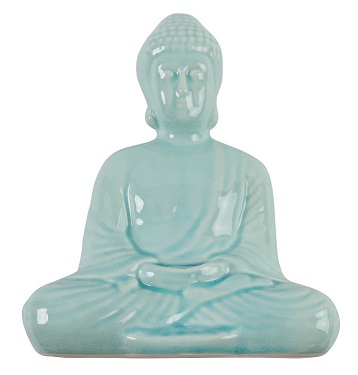Yoga Lifestyle Marketplace
History and evolution of Yoga

It is difficult to establish the historical origin of yoga, there is often a disparity of opinions among experts. Keep in mind that yoga traditionally has been transmitted orally from master to disciple, from heart to heart over the centuries, so determining the exact date is very complicated.
The mythology of India tells that the origin of yoga is lost in the memory of humanity and would have an eons of many eons (one eon or kalpa equals 4320 years). Various historians claim that yoga predates the Vedas (the oldest texts of mankind) and could have an age of 5000 years or more and its origin would be in the Dravidian culture of India or even before it. For other experts, yoga has its origin in the Vedic culture.
In the excavations carried out in the regions of Mohenjo-Daro in the south of India and Harappa in the north, various objects have been discovered with representations of individuals -possibly divinities- performing yogic postures and in a meditative attitude. Such objects could have an age of approximately 3500 years or even more.
Despite all these findings, the origin of yoga remains a mystery. The mythology of the Indian attributed to Shiva its creation, in the context of yoga the Gods represent higher states of consciousness of the human being (love, kindness, compassion, etc.), Shiva represents the Supreme Consciousness. It is said that Shiva was on a desert island teaching the sacred science of yoga to his wife Parvati but there was a fish there who was very attentive listening to the teaching, this fish became the mythical sage Matsyendra a transmitter of yogic knowledge for humanity.
From a humanistic perspective, yoga has been considered rooted in the depths of the collective unconscious of humanity.
Yoga would arise from the deep need to know oneself, to realize oneself and in this sense; where is its origin? ...... .. For many yogis yoga has no origin, it has always existed and its teaching is eternal.
The VEDAS are the first texts where certain concepts of yoga are mentioned. Although it will be the UPANISHADS (between 800 and 500 B.C) -which constitute the essence of the Veda- those that bring yoga to light. Veda means knowledge of knowledge, and refers to the traditional sacred books of India, written in Vedic.
With respect to the UPANISHADS we find the following references on yoga:
Taittiriya Upanishad: the term yoga appears, the CHAKRAS (psycho-energetic centers), the KUNDALINI energy, and some meditation techniques are named.
Svetashvatara Upanishad: instructions are given for the practice of yoga.
Nadabindu Upanishad: the mystical sounds and the MANTRA OM are described.
Maitrayani Upanishad: the fundamental forms of yoga are cited; laya-yoga, mantra-yoga, hatha-yoga, raja-yoga.
With the Upanishads will also arise concepts such as; brahman, atman, karma, maya, dharma, etc., which will be the basis for the different schools of later thought. The essential message of the UPANISHADS is that the Self (our deep nature) can only be known through oneself and not by mere speculations.
Around the fifth century BC, yoga penetrates the BHAGAVAD GITA, a beautiful poem that narrates the conversation between Krishna and Arjuna before the beginning of a battle. It develops the paths of karma-yoga and bhakti-yoga. The essence of GITA is selfless action and its message is that the individual must fulfill their duty (act in the world) renouncing the fruits of their actions, being detachment the fundamental virtue.
Finally yoga is established in the nineteenth century as one of the six schools ástikas-that accept the authority of the Veda-of Indian thought along with Vedanta, Sankhya, Mimamsa, Nyaya and Vaisheshika. The heterodox schools or narsikas dárshanas that are those that do not accept the authority of the prohibition, are composed by the materialists or charvakas, the Buddhism and the Jainism. Although yoga constitutes one of the schools of Indian thought, it remains independent of any institution or group. Many philosophies, religions and schools of thought have used yoga in their practices
Patanjali, between 400 and 300 BC, will be in charge of ordering and systematizing the RAYA-YOGA through the YOGA SUTRAS or aphorisms, in which the principles, phases and aims of yoga are exposed. The YOGASUTRAS are one of the first treaties of psychology of humanity.
Subsequently, different texts of HATHA YOGA will appear: the HATHA YOGA PRADIPIKA of Swatmarama in the 15th century, GORAKSHA SAMITHA of Goraknath, the GHERANDA SAMITHA of Gheranda, SHIVA SAMITHA of Shankara.
During the nineteenth and twentieth centuries, many of the best-known yoga masters will be born; Ramakrishna, Ramana Maharshi, Lahiri Mahasay, Krishnamurti, Vivekananda, Anandamayi, Aurobindo, Swami Sivananda, Swami Satyananda, Yogananda, etc. All of them have enriched the teaching and have guided thousands of people around the world.
How did yoga then become the practice we know today with so many positions and so many styles and what is the history of modern yoga?
The credit goes to three Indians who lived at the beginning of the 20th century and who focused on the physical aspects of yoga and not just on meditation.
· Swami Kuvalayananda who focused mainly on the infinite benefits that this discipline can bring to health.
· Swami Sivananda and Krishnamacharya who instead concentrated on developing a wide and varied system of asanas and pranayama techniques.
In particular Krishnamacharya defined as "the father of yoga", instructed three masters who have distinguished themselves and have influenced the spread of yoga in recent years: Pattabhi Jois who gave birth to Ashtanga Yoga, Indra Devi who earned the name of "First Lady of yoga" and BKS Iyengar who created a style characterized by a particular attention to alignments and the use of supports, called Iyengar Yoga, which has become an integral part of the history of yoga.
Yoga became popular because in our everyday life we are craving for a balance and for a quiet state of mind and a better body shape. The most important thing is to keep in mind that the principles of yoga are universal, because human nature is practically the same everywhere. Once we overcome the simple physical differences, focusing on the human mind, we quickly discover that the profound insights of yoga are valid for us today as they were for Indian Yoga practitioners thousands of years ago.
Recent Blogs
- Tips for Caregivers Who Want More from Their Yoga Regimen (Hint: There’s an App for That!)
- Everything You Need to Know About Asana
- Almost every world leader has discussed yoga with me: Narendra Modi
- Why celebrities, CEOs and politicians make meditation part of their daily routine
- History and evolution of Yoga






